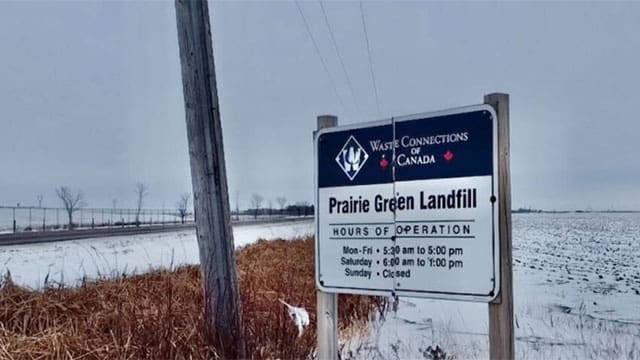The search for the remains of Indigenous women at a landfill in Manitoba raises questions about racial privilege and government accountability
 In August last year, leaders of four church denominations urged Manitoba’s political leaders to search Prairie Green landfill just north of Winnipeg for the remains of two Indigenous women, Morgan Harris and Marcedes Myran, presumably murdered by Jeremy Skibicki, a white man.
In August last year, leaders of four church denominations urged Manitoba’s political leaders to search Prairie Green landfill just north of Winnipeg for the remains of two Indigenous women, Morgan Harris and Marcedes Myran, presumably murdered by Jeremy Skibicki, a white man.
One of these leaders claimed anti-Aboriginal racism explained the province’s refusal to support this effort.
“I think sometimes we have a preference for people who are white in this country, and we tend to ignore people who are Indigenous,” Susan Johnson, national bishop of the Evangelical Lutheran Church in Canada, said.
“I can’t imagine that if there were white people in the landfill that we wouldn’t be searching for them,” she added. “So, I think, in many ways, this is racist, and it certainly does not work in terms of our commitment to reconciliation.”
Calls for a search of Prairie Green grew more strident after former provincial premier Heather Stefanson said she would not fund a complex undertaking that could take up to three years and cost between $84 and $184 million, citing dangers to searchers as highlighted in a feasibility report overseen by the Assembly of Manitoba Chiefs.
The same charge of racism has been made repeatedly by family members and other supporters of the two murdered women.
According to Cathy Merrick, grand chief of the Assembly of Manitoba Chiefs, not searching “would send a dark message that Canada’s governments condone the act of disposing of indigenous women in landfills.”
One indigenous writer even called the government’s decision “the empowerment of racist ideology and behaviour.”
This claim is false: the true empowerment lies with the families of the deceased women and their influential Indigenous supporters, who not only played a significant role in ousting Stefanson and her Conservative Party in a provincial election last October but also secured funding from the federal government for an allegedly more comprehensive feasibility study. The results of this study, released in late January, recommended $90 million in public financing but have yet to be disclosed.
Finally, on the week of Mar. 17, $40 million was granted by the provincial and federal governments to carry out retrieval and identification efforts later this year. Also earmarked for the families of the two women was $700,000 for healing and financial support, a dispensation unheard of in similar non-Indigenous circumstances except as granted by the courts or by contractual agreement, yet another example of indigenous racial privilege.
Sections of the landfill where the women’s remains are believed to be located had 712 tonnes of dangerous asbestos deposited between Apr. 11 and Jun. 20, 2022. Nearly 12 tonnes were deposited on May 16, 2022, the day the remains of the two women may have been dumped into the landfill.
Nevertheless, in a Mar. 15 statement, the new Manitoba premier, Wab Kinew, said, “Our commitment to search the landfill has been unrelenting,” fulfilling a pledge made before his election in October. “Now, we’re glad to be able to move forward with the funds necessary to search every cubic metre of the relevant space. While we don’t know if the search will be successful, we have to try. That’s our commitment to these families.”
Kinew carefully ignored that the first feasibility study saw one of the most critical observations in the seminal 2019 Paulsen and Moran study misinterpreted: “A search should not be initiated if more than 60 days had passed between the body entering the landfill and the search being initiated,” because of the rock bottom probability of human remains being found after that time, was arbitrarily rewritten as: “Paulsen and Moran (2019) caution initiating a search when more than 60 days have passed between the body entering the landfill and the search being initiated.”
If a search should not be initiated after 60 days, how could a search after 760 days, 13 times longer – the period that would elapse if a Prairie Green excavation started in early June this year, following several months of preparatory work – be remotely feasible?
Still, the nature of Canadian indigenous privilege will mean that after the $40 million has been spent, there will be a successful claim for $40 million more, a process that will never end until such racist privilege ends.
Hymie Rubenstein is editor of REAL Indigenous Report and a retired professor of anthropology at the University of Manitoba.
For interview requests, click here.
The opinions expressed by our columnists and contributors are theirs alone and do not inherently or expressly reflect the views of our publication.
© Troy Media
Troy Media is an editorial content provider to media outlets and its own hosted community news outlets across Canada.



